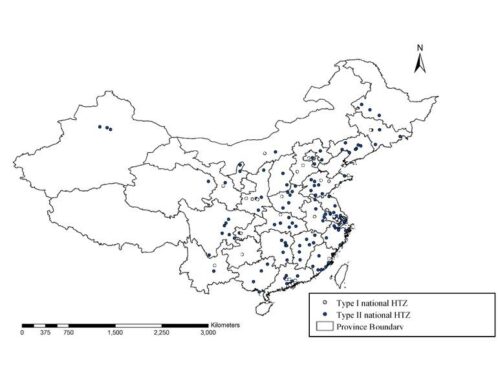Do Place-Based Policies Promote Local Innovation and Entrepreneurship?
Xuan Tian, Jiajie Xu
Review of Finance, Volume 26, Issue 3, May 2022, Pages 595–635, https://doi.org/10.1093/rof/rfab029
Technological innovation and entrepreneurial activities are key drivers of a nation’s economic growth. Intensive studies have explored a variety of economic, institutional, and social determinants that could promote innovation and entrepreneurial activities. Specifically, public policies, such as various government subsidiary programs, government-sponsored venture capital (VC), research and development (R&D) tax credit programs, and federal spending, have played important roles and attracted many discussions from researchers and regulators. A fast-growing class of “place-based” policies, however, receives relatively little attention from financial economists although researchers have discovered significant effects of geography on corporate finance decisions and stock market performance. In this paper, we focus on an emerging country, China, and studies the effectiveness of place-based policies by examining how the establishment of national high-tech zones, a prominent place-based public policy in China, affects local innovation output and entrepreneurial activities.
China presents an ideal setting for carrying out research on place-based policies, in particular on national high-tech zones: In 1988, the Ministry of Science and Technology of China (MOST) implemented the “Torch Plan” with the main goal of establishing national high-tech zones. The policy aimed to develop China’s high-tech industries and enhance economic growth. The first national high-tech zone, the ZhongGuan Village (Beijing) high-tech zone, was established in 1988. In 1990, the State Council approved the first wave of 20 national high-tech zones. After the early success, in 1991, the State Council promulgated preferential policies for national high-tech zones and approved the second wave of 26 high-tech zones. In 1992, the third wave of 25 high-tech zones was approved. By the end of 2016, there had been 146 national high-tech zones established in China across all provinces and autonomous regions.
To tackle the endogeneity issue and establish causality, we use a difference-in-differences (DiD) approach that uses staggered establishments of national high-tech zones in various Chinese cities during our sample period. Our baseline DiD regressions suggest that the establishment of national high-tech zones has a positive, causal effect on local innovation output and entrepreneurial activities. Specifically, compared to cities without high-tech zones established, cities with high-tech zones exhibit a 36.9% larger increase in patent applications, a 50.3% larger increase in patent grants, a 17.5% larger increase in patent citations, and a 12.9% larger increase in new firm registrations. These effects are economically sizable and support the argument that China’s place-based policies spur local innovation output and entrepreneurial activities. A number of additional tests suggest that the effects appear causal.
Furthermore, we show that access to finance, reductions in administrative burden, and talent cultivation and introduction could be three plausible underlying channels through which high-tech zones promote local innovation and entrepreneurship. Lastly, national high-tech zones appear to have some positive spillover effects on nearby cities instead of increasing their own innovation output and entrepreneurial activities at the cost of nearby cities.
Our paper sheds new light on the evaluation of the effectiveness of China’s place-based policies in terms of promoting local innovation and entrepreneurship.
Figure 1
